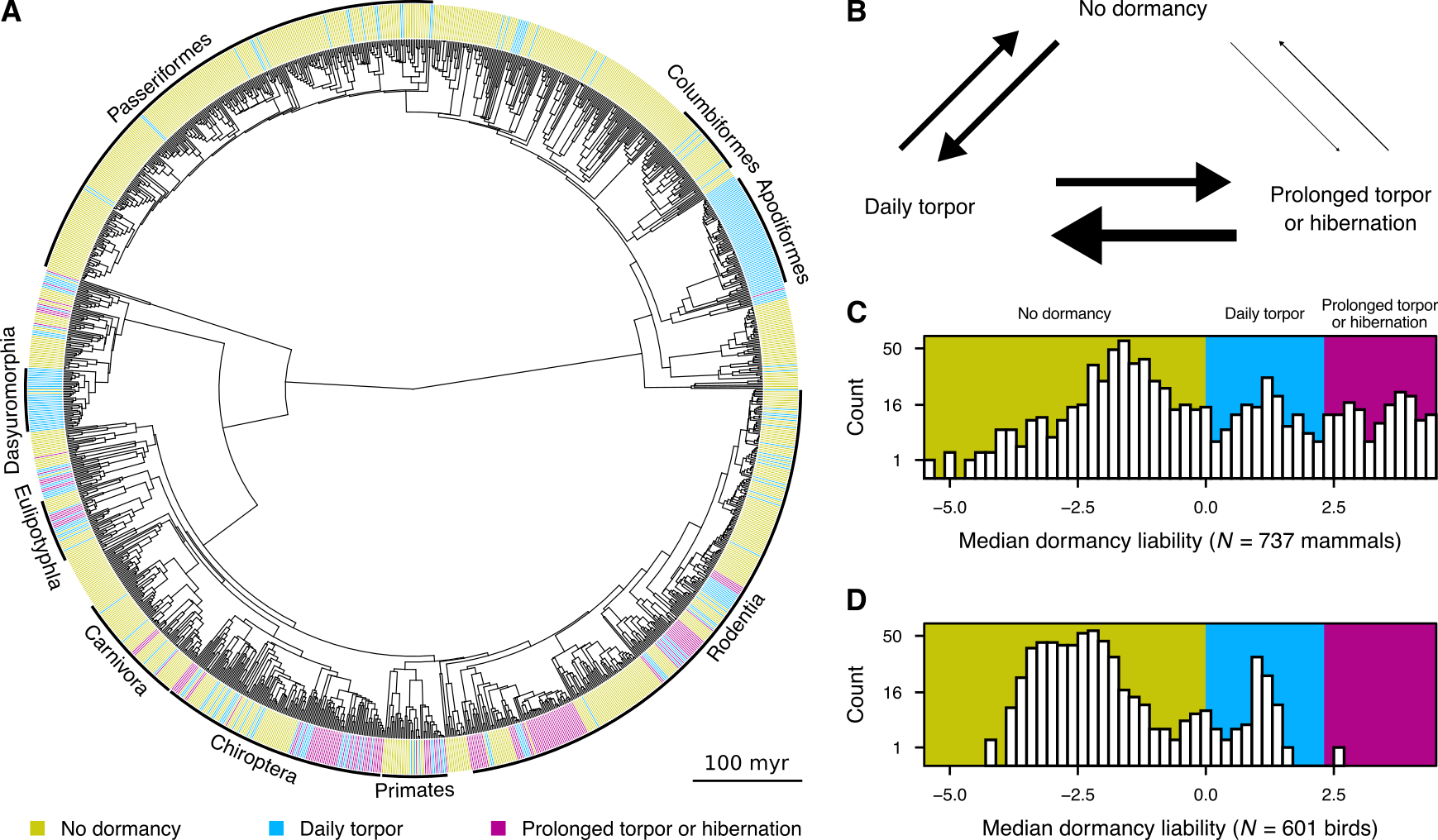2. Kontopoulos, D.-G.✉, Levesque, D.L., and Hiller, M.✉ (2023). Numerous independent gains of torpor and hibernation across endotherms, linked with adaptation to diverse environments. bioRxiv 2023.12.12.571278. 

Abstract:
Many endotherms from diverse taxonomic groups can respond to environmental changes through dormancy, i.e., by greatly reducing their energy expenditure for up to 24 hours (daily torpor) or longer (hibernation). We currently have a poor understanding of how dormancy evolved across endotherms and its associations with physiological traits and ecological factors. To fill this gap, we thoroughly examine the evolutionary patterns of dormancy and its links with 21 key ecophysiological variables across 1,338 extant endotherms. We find that daily torpor and hibernation are parts of a dormancy continuum, and that there are several, albeit weak, associations between dormancy and species' physiological or environmental characteristics. Furthermore, we show that early endotherm ancestors likely did not hibernate and that this trait evolved multiple times in independent lineages. Overall, our results provide an explanation for the remarkable variation in dormancy patterns, even among species occupying highly similar niches.